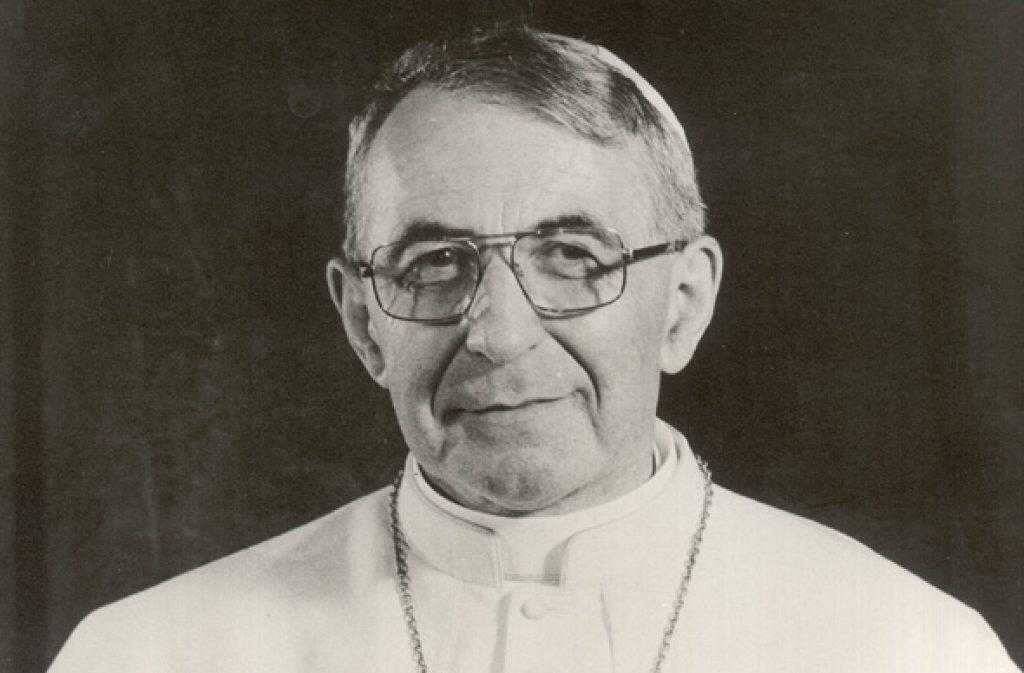A brief biography of Pope John Paul I
Albino Luciani was born in 1912 in Belluno, a city in the northern portion of Italy. He became a priest in July 1935 and rose up the hierarchy–becoming a cardinal in 1973. Upon the death of Pope Paul VI in 1978, Luciani was elected Pope in August of that year and took the name of Pope John Paul I. Initial reaction to his election was positive and most people expected a fruitful papacy under his direction.

Pope John Paul I in 1978. Image credit: Wikipedia.
A Brief Papacy
That’s why it was quite a shock when he died September 28, 1978, just 33 days after his papacy started.
Most people mourned the man, feeling that he had had the potential to lead the Roman Catholic Church in positive directions in many areas. But, to be honest, he eventually became somewhat of a footnote in the history of the Catholic Church.
Suspicion and Conspiracy Theories Begin
Some people, however, almost from the day after his death, began to question the details of his death. Some things, they felt, seemed to indicate that John Paul I had not died of a heart attack, which the Vatican officially cited as the cause of death.
The story goes that Sister Vincenza Taffarel, a Vatican housekeeper, came across the Pope’s body on the morning of the 28th. The initial formal announcement, however, failed to mention her presence in John Paul I’s bedroom or to mention any concrete information about how his body was found. She reportedly found him clutching papers on which were written notes for a homily he would be giving in the near future. Those papers were never disclosed, but some conspiracy theorists believe the content would include very controversial statements about the “gender” of God–including both male and female aspects to the nature of the divine creator. This contradicted some long-held Church teachings that some allegedly hinted must not be publically questioned.
Henry Borynski: A Priest Vanishing Without a Trace
The details about his autopsy were equally murky. Some claim that there never was an autopsy at all, which brings into question how the Vatican could officially announce the cause of death.
Over time, several subsequent books would claim that there was a conspiracy to cover up the “murder” of the Pope.
Author David Yallop claimed that the Vatican Bank was disturbed that the new Pope would initiate an investigation into the possible abuses and corruption of that institution. Additionally, Yallop claimed that the paper John Paul I was clutching was not a sermon but was a listing of prominent Catholics who were secretly members of the Freemasons (it is illegal under Catholic Church law to be a member of the Freemasons) and contained facts pointing to financial misdeeds of members of the Church hierarchy.
Author Lucien Gregoire has written several books on his theories about the questionable death of John Paul I. He has indicated involvement with the CIA, Russia, and vague connections to ultra-conservative Church officials who viewed what they perceived to be a progressive Pope who might take away some or all of their power in the Church.
Related: Pope Joan
Another theory is that John Paul I was investigating the possibility of bringing back the Latin form of Mass, which some Church officials claimed would bring ruin to the Church itself. The proponents of this theory believe that John Paul I needed to be silenced before he could progress on that path.
Most people, however, now believe that John Paul I died from natural causes and dismiss all claims of any conspiracies in his death.
Although the conspiracy story would inspire novels and plays and even comic books, the life, and death of John Paul I have unfortunately become a small backstory due to his short papacy and the immense popularity of his successor Saint John Paul II.
Sources:
“Pope John Paul I”, Wikipedia, pulled 2-1-15.
“Pope John Paul I conspiracy theories”, These Last Days Ministries website, pulled 2-1-15.